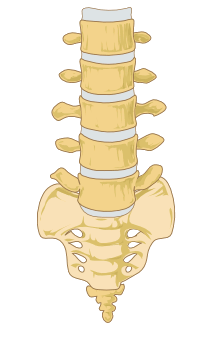
Spinal tap and lumbar puncture is a procedure that aids in the diagnosis or treatment of a suspected disorder associated with the central nervous system (CNS). A needle is utilized to access the spinal canal and cerebrospinal fluid of a patient. This procedure is relatively quick (30 to 60 minutes) and provides the best results with the least amount of risk to the patient’s safety.
What is it?
A spinal tap/lumbar puncture can be either diagnostic or administrative. During the procedure, a needle is inserted between vertebrae to extract cerebrospinal fluid, which is the fluid that surrounds a patient’s brain and spinal cord to protect it from injury. Analyzing this fluid can help reveal severe infections, such as spinal cancers, meningitis, and multiple sclerosis. Alternatively, medication can be injected between the vertebrae, such as anesthetic or chemotherapy drugs.
What should I do to prepare?
The doctor may require a series of blood tests before the procedure, as well as a CT scan or MRI if it is the patient’s first time receiving this surgery. The doctor will also ask the patient or refrain from taking prescription or over-the-counter blood thinners in an effort to promote clotting at the surgical site. Patients should talk with the physician to ensure that any allergies, particularly to surgical materials or anesthetics, are made known.
What happens during the process?
Spinal taps and lumbar punctures are performed on an outpatient basis. The patient will change into a gown, and lie in a position to flex their back; either on their side in the fetal position, or sitting down and leaning forward. The back will be washed and draped, and a local numbing anesthetic will be injected. Once numbed, a hollow needle will be inserted between lower vertebrae into the lumbar region, and cerebrospinal fluid will be extracted. Or, alternatively, medication or dye could be injected. The needle will be removed, a bandage will be placed, and the procedure will conclude within 45 minutes.
What are the risks and potential complications?
As with any medical procedure, a spinal tap and lumbar puncture does carry risks, although it is accepted as a very safe procedure. Risks include:
- Post-procedure headache
- Back discomfort or pain
- Bleeding
- Brainstem herniation
Disclaimer:
All GlobeHealer Site content, including graphics, images, logos, and text, among other materials on the site are only for education purposes. This content is not intended to be a substitute for professional medical advice, and you should always contact your physician or qualified health provider for information regarding your health. Information on this site regarding the overview, diagnosis, and treatment of any kind should be looked at, in addition to the advice and information of your health care professional. Do not disregard medical advice or delay seeking treatment or medical advice due to information found on the GlobeHealer site.
If there is even the possibility that you may have a medical emergency, seek treatment, call your doctor, or call your local emergency telephone number immediately. GlobeHealer does not endorse being the first line of communication in case of emergency and does not endorse any specific test, physician, facility, product, procedure, opinion, or other information that is or may be mentioned on this site or affiliated entities. Reliance of any and all information provided by GlobeHealer, its employees, affiliations, others appearing on the Site under the invitation of GlobeHealer, or visitors of the site is solely at your own risk and is not the responsibility of GlobeHealer.
Image Source: https://commons.wikimedia.org/wiki/File:Lower_spine.gif
